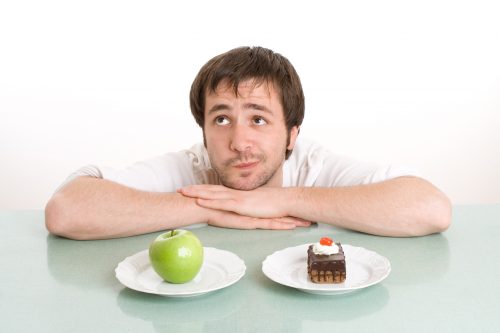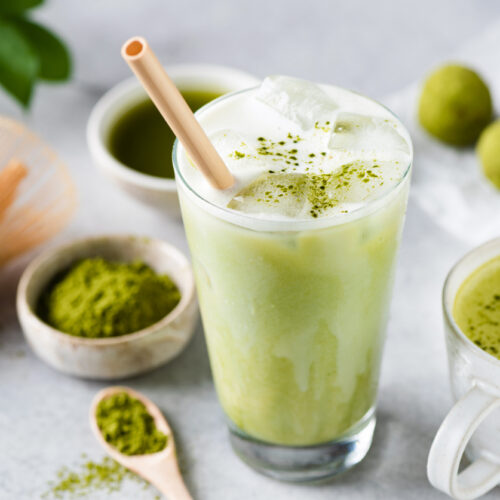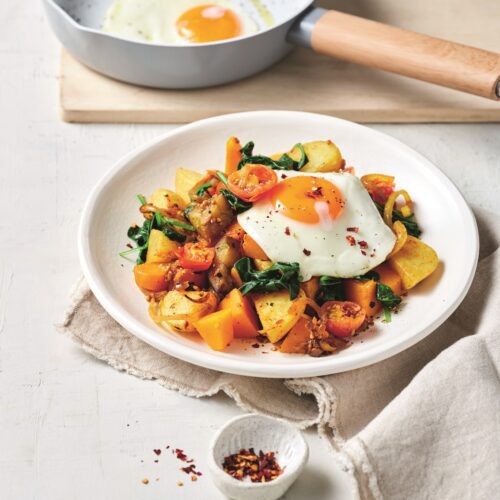
Whether you work in an office or at home, on a building site or on a plane, finding the time, energy, ingredients and inspiration to eat healthy meals can be a daily challenge. Dietitians Caitlin Reid and Claire Turnbull show us the most important everyday food traps – at work, home and on the go – and give us some real and simple solutions.
While researching this article, we asked taxi drivers and lawyers, airline attendants and company executives, truck drivers and beauty therapists, what their biggest food issues were. And their answers were surprisingly similar: "I flag mid-afternoon and eat junk to keep me going"; "I don't have time to stop so I usually skip lunch"; "Working shifts is a killer, you just never get eating right"; "Often there's no other choice but to eat something you know's not good for you"; "At night I'm just too exhausted to even think about cooking a proper meal."
Can you identify with any, or all, of these comments? And do you answer yes to any or all of the following questions?
- Do you regularly skip meals and don't have snack breaks throughout the day?
- Do you go food shopping only when you decide to cook or when you run out of loo paper?
- Do you comfort yourself with fatty and sweet food and drinks when the going gets tough?
Well, join the club – and now cancel your membership!
Trap 1: Skipping breakfast
There are many reasons for skipping breakfast, and they all seem valid at the time. Perhaps you're too busy getting your kids fed, packed and out the door on time to worry about yourself. Or you've made it to the gym for a 6am session, but then had to run like mad to get yourself showered, dressed and off to work before peak hour sets in. You may not even be a breakfast person, preferring to delay your first meal of the day until that mid-morning mega-muffin and takeaway latte.
Whatever the reason, it's time to change this unhealthy habit. After a night's sleep, your brain and muscles are crying out for the starter fuel needed to spring them into action for the day. Skipping brekkie reduces memory, concentration and problem-solving skills, meaning you are less productive at work. People who skip breakfast can slow their metabolism and they tend to be heavier than breakfast eaters. Breakfast skippers are also more likely to binge-eat later in the day.
Finally, deciding against eating breakfast in the morning has been found to reduce daily intake of vital nutrients, in particular fibre, calcium, iron and magnesium. Replacing a fibre-packed breakfast, such as a bran-based cereal or multi-grain bread, with a muffin, sausage roll or other processed item means a higher daily fat and sugar intake, which, when combined with not enough fibre, is a great way to promote constipation and poor bowel health.
Solution
A nutrient-rich breakfast that includes whole grains, vitamin C, calcium, fibre, B vitamins and protein will provide you with a great start to meeting your daily nutrient requirements and deliver the energy you need to stay alert during the morning, and you'll be more productive. There's no rule to say you must have breakfast as soon as your feet touch the ground, but eating within two hours of waking up is recommended.
At home
- High-fibre breakfast cereal or muesli with fresh or canned fruit and reduced-fat milk
- Whole grain toast topped with cottage cheese, cinnamon and honey
- Fresh fruit with yoghurt
- Fruit smoothie and a cereal bar
- Baked beans and grilled tomato on toast
- Porridge made with half water, half milk topped with berries and kiwifruit
- High-fibre breakfast cereal with reduced-fat milk or yoghurt and chopped dried figs or sliced fresh strawberries
- Whole grain toast, eggs or baked beans and fruit
- Yoghurt, banana, reduced-fat milk and a few oats blended into a smoothie
On the road
- Cereal bar and drinking yoghurt
- High-fibre cereal, dried fruit and unsalted nuts with a small carton of milk
- Ham and reduced-fat cheese sandwich on whole grain bread (made the night before)
At work
- Wholegrain or raisin toast with fruit or non-dairy spread and a trim latte
- English muffin with cheese and tomato
- High-fibre cereal with fruit and trim milk
Trap 2: Skipping lunch
Research in Australia found one in three people skipped lunch at least once a week, and one in 10 rarely or never set aside time for a lunch break; we're probably not much different in this. We'll do it because there is just so much work to be done or because we're full from our mid-morning munch. By our reasoning, working through lunch means we get more work done and we save a few kilojoules, so it's okay as long as we have a good dinner, right?
Wrong! Skipping meals doesn't aid weight loss – it actually slows our metabolism and makes us more likely to binge on sugary and fatty 'treats' at 3pm. And having a decent dinner doesn't replace the important contribution lunch makes to your total daily vitamin, mineral and other nutrient intake.
Eating lunch helps to increase energy and motivation levels, meaning you are more productive during the second half of the day. Research shows that people who skip lunch are more likely to suffer from the mid-afternoon slump, lacking energy to get through the last few hours of the day. Finally, lunch is a great way to improve relationships with family and work colleagues – a time to socialise, relax and de-stress.
Solution
Make lunch a priority by scheduling time for it in your diary or calendar. Avoid arranging meetings around lunchtime. If you're at home with the kids, sit down for lunch together.
A lunch break is also a good opportunity to increase your activity for the day. You could walk to meet a friend or, at the very least, just get outside for some sunlight and fresh air. Don't feel guilty for taking your lunch break – you will be more productive in the afternoon if you have had healthy food, fluid, fresh air and a few minutes to relax.
Simple lunch ideas
- Baked beans on two slices of whole grain toast – this meal is high in fibre, low in fat and as cheap as chips!
- Smoked salmon on two slices of whole grain toast, spread with reduced-fat cream cheese – a tasty way to boost your omega-3 intake. Buy a vacuum-sealed pack of salmon at the beginning of the week and it will do for a couple of days. Add a squeeze of lemon.
- Add half a packet of instant noodles to a vegetable soup.
- Heat half a container of pumpkin soup and serve over leftover steamed vegetables from the night before.
- Toast both sides of a halved pita bread. Spread with pesto and fill with reduced-fat feta, rocket and halved cherry tomatoes.
Trap 3: Replacing food with supplements
Have you ever turned to a multivitamin to give you a boost when you're feeling exhausted? It might seem like a good idea at the time but while vitamins and minerals are necessary for all metabolic processes in the body, multivitamin pills do not supply energy (in the form of protein, carbohydrate and fat) to the body. So if you feel better after taking a multivitamin, it's possible your diet is not nutritionally adequate.
Dietary supplements aren't meant to be food substitutes – they don't contain all of the nutrients and benefits that are found in whole foods such as fruit and vegetables. Instead of turning to pills in an effort to increase energy and motivation levels, take a look at your diet and see if you can make changes to your eating patterns.
Solution
Build your daily food intake around whole foods such as whole grains, fruit, vegetables, reduced-fat dairy products, nuts, seeds, legumes, fish and lean meat. Make sure you include a source of carbohydrate (such as whole grain bread and pasta, or brown rice), protein and small amounts of healthy fats at each meal. Aim to eat two serves of fruit and five serves of vegetables each day. Try to limit the amount of fatty, salty and sugary foods you consume and don't forget to drink plenty of water. All this combined will put you on the path to higher energy levels and overall health and well-being.
Trap 4: Sweet or fatty morning or afternoon snacks
If morning tea has become a ritual bikkie binge or 3pm your chocolate fix time, now is the time to break the habit. If you have skipped breakfast or lunch in an effort to get more work done, you may tend to treat yourself with fatty and sugary foods as a reward for your hard work. These foods boost your energy levels momentarily, only to have you crashing straight back down again.
Afternoon slumps happen when you eat snacks and meals high in fat, salt, sugar and caffeine, or because you've skipped meals and not provided your body with the nutrition it needs. Dehydration, stress and a lack of sleep and exercise can also leave you feeling desperate for a boost. But instead of reaching for chocolate, go for a five-minute walk or stretch and drink a big glass of water. We often confuse thirst with hunger.
Solution
Invest in a fruit bowl for your desk. We all need a minimum of two pieces of fruit every day – so arrive at the start of a five-day working week with 10 pieces of fruit. Choose non-messy varieties such as bananas, mandarins and apples. You could also stock up on fruit cups or canned fruit – these travel well and won't go off as the week progresses. To reduce biscuit bingeing, eat a piece of fruit in between each biscuit; this should slow you down.
If you can't go without a hit of chocolate or a fatty sausage roll, select a day each week as your 'treat' day and look forward to eating your favourite food on this day only. Also, you don't need to eat a whole block of chocolate in one sitting – try to limit yourself to two or three pieces.
For more tips, see our article How to tame a sweet tooth.
Trap 5: Filling up on coffee
Next time you're travelling to work or stopping for a break, take a second to look at the number of people around you with a takeaway coffee cup in hand. In a busy work environment, it's easy to fall into the habit of reaching for a coffee to fight off those hunger pangs or for a much-needed energy boost. But you might be surprised how many kilojoules you're consuming when you order your full-cream mega-latte and add two or three sugar sticks to it. Some coffees can have as much energy as a light meal!
Another thing to consider is caffeine. For healthy, non-pregnant adults, up to 300mg a day is considered a moderate intake and anything from around 450-1000mg a day is a high dose, which can cause problems of anxiety and agitation in some people. While it is thought that a coffee typically contains 100mg of caffeine per cup, this figure is only a rough estimate as caffeine content varies depending on the type of bean used and the methods of processing and preparation.
A recent Australian study found the caffeine content of commercially available espresso coffees to range from as little as 25mg to well over 200mg per cup, which means your daily caffeine intake could easily be reached with just two coffees – and that's if you order a one-shot regular-sized espresso, not a double-shot extra-large latte!
Consuming caffeine can increase alertness and your ability to focus on tasks. It makes you feel more awake, increases your body temperature and makes your heart beat faster. Excess consumption can lead to headaches, feelings of stress, restlessness and disturbed sleep patterns – making it harder to fall asleep and to stay asleep once you do.
Solution
Like anything, coffee has its good and bad points and the key is to consume it in moderation. And don't forget other drinks like tea and energy drinks can also contain caffeine (see below).
Instead of reaching for a coffee to increase energy levels, go for a walk. For snacks, choose low-GI foods such as whole grain bread, yoghurt and fruit, and don't forget to drink water.
Caffeine can also inhibit iron absorption, so instead of drinking coffee, tea or cola drinks with meals, drink them between meals; waiting about an hour between eating meals and consuming caffeine allows time for the iron from your food to be absorbed.
To ease the affect of caffeine on the gut (for those who suspect caffeine may be contributing to irritable bowel syndrome), try swapping to lemon, mint or ginger herbal teas – or at the very least, alternate between 'real' coffee and decaffeinated.
Average caffeine content for 250ml (1 cup)
- Starbucks long black 182mg
- Starbucks flat white 105mg
- Red Bull 78mg
- V 76mg
- Nescafé Classic (1 teaspon) 63mg
- Twinings Pure Green tea bag 46mg
- Dilmah English Breakfast tea bag 41mg
- Pepsi 25mg
- Coca-cola 25mg
- Coca-cola Zero 24mg
The amount of caffeine in tea or coffee will vary depending on its strength and the method of making.
Source: Consumer NZ 2007
Trap 6: Succumbing to peer pressure
Celebrations, leaving dos, colleagues' birthdays, engagement parties, good days, bad days, hooray it's Fridays….! Where there are celebrations or commiserations, one thing that is guaranteed… food! And when everyone else is tucking into sausage rolls and cakes – and encouraging you to, too – it can be tough to say no. The social side of eating and drinking will always be around us, so it's important to try to make healthy choices while still having a fantastic time.
Solution
The office shout: If this is a regular occurrence, try to find out whether anyone else is looking for healthy options. If so, email a list of suggestions including fruit, whole grain crackers, reduced-fat dips, small homemade healthy muffins, mini savoury muffins. If you are on your own in the healthy eating stakes, then bring something healthy for yourself and when it's your turn, buy healthy food. Your colleagues may be so impressed they might prefer it and change to healthier options themselves!
Workplace nibbles: Got a snack box or vending machine in the office? Can you talk to the 'powers that be' about getting in some healthy options, perhaps a mid-morning fruit platter, non-alcoholic drink options or a water cooler? If you have regular meetings, suggest they make healthier snacks available.
Trap 7: Shopping on the way home
Menu planning and strategic grocery shopping are the keys to healthy eating during the week, and even more so for busy workers. It's easy, and often tempting, to pick up convenience food such as ready-made meals, which can be high in kilojoules, saturated fat and sodium. And this type of meal looks all the more tempting when you've worked hard, skipped lunch and survived on coffee and snack food all day – in fact, you can be tricked into thinking it's your just reward. That and the big block of chocolate you threw into the basket on impulse at the checkout!
Solution
To make healthy eating easier, get organised. Set some time aside each week to plan meals for the following week. Write a shopping list and head to the supermarket once a week to buy a week's worth of groceries. Try to avoid visiting the supermarket or convenience store on the way home from a hard day's work, when you are tired and hungry. Or you could shop online and have your groceries delivered. You could also cook a few meals on the weekend and freeze single portions.
Trap 8: Using alcohol as a crutch
Some of us consume alcohol after work in an attempt to relax, unwind and fall asleep after a stressful day. However, the relaxed feeling that comes with alcohol does wear off, disrupting sleep and leaving you more awake in the early hours of the morning. Come the time you need to get up, you feel anything but refreshed. Alcohol can cause snoring by relaxing the muscles in the throat, interrupting everyone's sleep.
As alcohol is a depressant, excess alcohol consumption can slow brain activity, leading to anxiety, depression and aggression. It robs the brain cells of glucose and water, contributing to a hangover the next day. Alcohol contains empty kilojoules that, if not used, can lead to weight gain. The fatty foods often eaten with alcohol contribute to excess weight.
Solution
If you drink alcohol, consume it in moderation (no more than three standard drinks a day for a male and two for a female). A standard drink is equivalent to 10g of alcohol (or 80-100ml of wine, 285ml of standard beer, 60ml of fortified wine and 30ml (nip) of spirits). And, no, you can't save up your weekly drink allowance for a weekend binge. Consuming more than the recommended number of drinks in one sitting increases your risk of developing a number of cancers.
There are other great ways besides alcohol for you to unwind after work. Try taking a yoga or pilates class, get your family and friends together for a walk or a hit of tennis, meditate, read a book, or put on an aerobics DVD.
Save alcohol for social occasions.
Trap 9: Working at home
If I gave you a cent for every time I used to open the fridge when I first started working from home, you would be very, very rich! Whether you're telecommuting or busy with parenting duties, working at home can pay havoc with your intentions for healthy eating. Parents of babies and young children face particular challenges, because your time is not always your own; babies can be more demanding than the toughest of bosses.
Solution
- Work in a room away from the kitchen if possible.
- Structure your work day as if you were in a shared office. Set a time for snacks and lunch.
- Store the tasty, tempting food in non-see-through containers in the fridge and cupboard to keep out of sight.
- Keep a supply of portion-controlled snacks and put your daily allowance to one side.
- Drink plenty of water: keep a 1.25 litre bottle in your office or near you at all times to avoid you having to go back into the kitchen to keep filling it up.
- Do some exercise – walk to the local shops to get the paper or supplies.
- Try and look after yourself as well as you do your kids – you need food and water, too.
Trap 10: Eating on the run
Sometimes, despite all good intentions and planning, when you are driving between meetings or you're late to pick up the kids from school, you really just can't stop for long to eat. All you will pass are dairies, gas stations and fast food places and desperation can kick in.
Solution
Number one rule: always have food in your car for an emergency – keep it in the boot if you are likely to nibble on it from the glove box. Have a few high-fibre muesli bars, tubs of fruit, cans of reduced-fat creamed rice and a few plastic spoons. These, alongside things you can buy on the way, will allow you to make a reasonably healthy lunch or snack on the run, such as:
- Cereal bar with a tub of fruit
- Small can of reduced-fat creamed rice and fruit smoothie
- Fruit bun and a carton of reduced-fat milk
- Liquid breakfast drink and a piece of fruit if available
- Fruit smoothie and small bag unsalted nuts
- Small savoury muffin and bag of dried fruit or tub of fruit
- Plain burger with salad
- Chicken (skin off) and salad
- Fish without the batter and salad, beans or peas if available
If you are a regular traveller or seem to often get stuck in the car for lunch, find a small chilly bag and take reduced-fat yoghurts, fruit smoothies from home, whole grain sandwiches or wraps.
Workplace lunch construction
Don't worry, there is no scaffolding or cranes involved, just a new way of thinking!
Many of us are used to making a packed lunch the night before work or throwing something together over a morning brew. For some people, this is the only way things will work, but for others, making lunch at work could make life easier and lunch even tastier.
Here's how
- Keep a basic stock of food at work and re-stock every few weeks. How much you need will depend on how many times you will be having lunch at work, so this will vary.
- You may need to negotiate a little desk drawer or cupboard space, but it is well worth it! If you regularly eat with a friend then why not share your basics and take turns in keeping them stocked up.
- Invest in some plastic food boxes and mini resealabale bags. Keep wet and dry ingredients separate and assemble at work.
- Once you have the basics, all you need to bring in is fresh grainy bread, fresh lean meat or dinner leftovers, salad extras and any fresh healthy snacks.
What to have in the work fridge
- Your favourite reduced-fat salad dressing
-
A variety of tasty chutneys like tomato, beetroot, piccalilli
Bag of salad leaves, baby spinach or coleslaw without dressing - Bag of mini carrots for lunches or snacks
- A pot of reduced-fat cream cheese to use as a spread or reduced-fat ricotta cheese
- Reduced-fat yoghurts
Desk drawer or cupboard
- Marmite or Vegemite
- Peanut butter
- Whole grain crackers
What's your work trap?
Add some of these to your normal, healthy diet and you could find yourself piling on the kilos…
Friday night after work: 2 wines, 2 handfuls of chips = 1870kJ per week
Possible weight gain over year 3.4kg
3 daily lattes, 5 days a week = 8985kJ per week
Possible weight gain over a year 15.6kg
Mega morning muffin = 7940kJ per week
Possible weight gain over a year 13.8kg
V + CookieTime cookie = 12,325KJ per week
Possible weight gain over year 21.4kg
www.healthyfood.com










